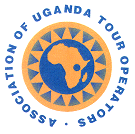Kilimanjaro National Park
Mount Kilimanjaro is the highest mountain in Africa and the tallest freestanding mountain in the world, permanently covered with snow. Mt. Kilimanjaro is an extinct volcano with 3 major peaks: Uhuru Peak (Kibo Peak), 5.895m (19,340ft), Mawenzi Peak, 5.149m (16,893ft) and Shira Peak, 3.962m (12,999ft). Kili can be climbed (hiked) throughout the year with our experienced guides.
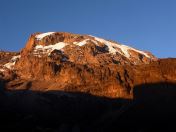
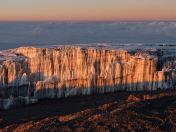
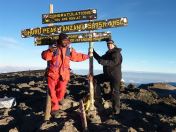
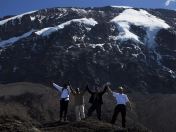
Book one of the routes private or with your own group, or join one of our Group Tours (with guaranteed departures) using the Machame Route. For each of the routes It is possible to add one day for extra acclimatization.
Put on your walking shoes and have this intense and fantastic experience with us!
Tours Kilimanjaro National Park
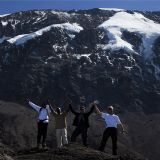


KILIMANJARO MACHAME ROUTE (6 DAYS)
Machame is probably the most beautiful route up Kilimanjaro.
For this route, you don`t need any mountain climbing skills, but you must be fit.
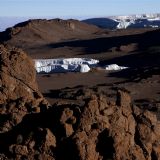


KILIMANJARO LEMOSHO ROUTE (7 DAYS)
Lemosho route is a little used, unspoiled, remote and beautiful Route. The second part of the route is similar to the Machame and Shira route On the first day you are accompanied by an armed ranger, because you can have encounters with buffalo, elephant and other big animals.
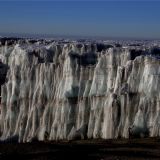


KILIMANJARO MARANGU ROUTE (5 DAYS)
The Marangu Route (also known as the Coca Cola route) is the most popular route, partly because it is the least expensive route.
For this route, you don`t need any mountain climbing skills, but you must be fit.
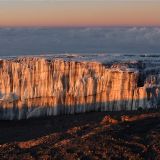


KILIMANJARO RONGAI ROUTE (6 DAYS)
The Rongai Route is one of the easiest ascents to the peak.
It has a well-defined path, which has been well set out and where most obstacles have been modified to make it friendly.
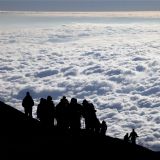


KILIMANJARO SHIRA ROUTE (7 DAYS)
Shira Plateau Route is a little used, unspoiled, remote and a beautiful way up to Shira Plateau.
On the first day you will drive by car and only need to walk the last part to Simba Camp.
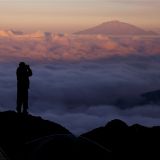


KILIMANJARO UMBWE ROUTE (6 DAYS)
The Umbwe Route is the most direct (and for that reason also the hardest) route to the summit of Mount Kilimanjaro, through the Southern Glaciers of Kilimanjaro and Western Breach of Kibo.
More Kilimanjaro National Park
We are specialists in Kilimanjaro Climbing (hiking). Our very experienced guides will do their best to help you to reach the summit. Before we start hiking, the guide checks your equipment and in case anything is missing or not okay we make sure we rent it for you. Over 90% of our clients reaches the summit!
Please let us know if you have any question about Kilimanjaro: kilimanjaro@kazingatours.com
Kilimanjaro has 6 different routes:
- Marangu Route (also know as Coca Cola Route), 5 days or 6 days. This is the only route using huts, the other routes are camping routes (we carry your tent for your convenience).
- Machame Route (also known as the Whiskey route), 6 days or 7 days. Known for it’s beautiful sceneries. You can also do this trip as a GROUP TOUR with guaranteed departure.
- Rongai Route, 6 days or 7 days. Starting from the North side and gives you the best chances to see wildlife
- Lemosho Route, 8 days or 9 days. Ideal for people with more time. It starts slowly, which gives the best chances to reach the summit (because of acclimatization).
- Shira Route, 7 days or 8 days. Ideal for people with more time. It starts slowly, which gives the best chances to reach the summit (because of acclimatization).
- Umbwe Route, 6 days or 7 days. The most direct route to the summit, and for that reason the most difficult route for people coming from low altitudes.
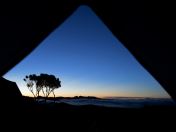
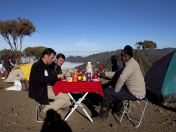
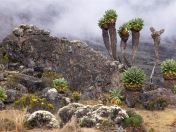
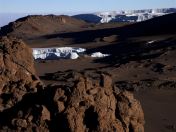
Porters will carry all your personal items, equipment and supplies and a cook prepares your meals during the trekking. We use tents for sleeping during the trekking (except for Marangu Route where we use huts). The porters will take care of the tents.
During the trekking you will be rewarded with fantastic scenic wonders and great panoramas. From early misty mornings to late afternoon sunsets. Mount Kilimanjaro also gives you the best views of Mount Meru.
All our trips include the national park fees and rescue fees!
The guides, cook and porters are vital for your success in reaching the summit, so we have trained them well and pay them. We also regularly give them a checkup to be sure they are able to hike the Kilimanjaro.
We advise our clients to be physically fit when doing the Kilimanjaro climb!
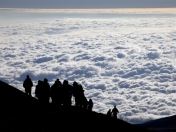
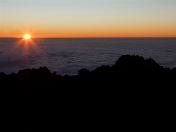
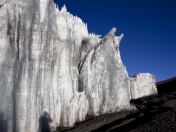
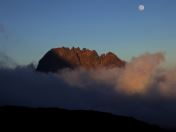
Video Kilimanjaro National Park
Travel info Kilimanjaro National Park
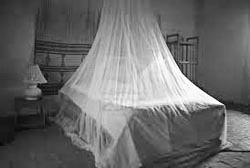 A certificate proving that you have received a yellow fever vaccination is obligatory. Furthermore all required inoculations must be recorded by your health practitioner on a valid vaccination certificate. You must carry this document with you throughout the tour. All visitors should take malaria prophylactic drugs. We also advise that you bring a mosquito repellent with you. Always consult your doctor or pharmacist for up to date requirements, inoculations and personal recommendations!
A certificate proving that you have received a yellow fever vaccination is obligatory. Furthermore all required inoculations must be recorded by your health practitioner on a valid vaccination certificate. You must carry this document with you throughout the tour. All visitors should take malaria prophylactic drugs. We also advise that you bring a mosquito repellent with you. Always consult your doctor or pharmacist for up to date requirements, inoculations and personal recommendations!
Normally you need the following vaccinations (but please always consult a doctor):
- Yellow Fever (you must have this can even be checked on arrival, especially when flying within East Africa)
- DTP
- Hepatitis
For Malaria you need to take tablets, Malarone or Lariam. Malarone is mostly used (please always consult a doctor).
Hygiene is not at the same standard as in your home country, so we advise you to bring a disinfectant cream with you. Always drink bottled water instead of tap water.
To make the hike to the summit of Kilimanjaro as enjoyable as possible there are some general rules and regulations:
- Hikers attempting to reach the summit should be physically fit
- If you have a sore throat, cold or breathing problems do not go beyond 3.000m above the sea level
- Children under ten years of age are not allowed to go above 3.000m (9,800ft) above sea level
- If you have heart or lung problems do not hike the mountain at all without consulting your doctor
- Allow plenty of time for the body to acclimatize by ascending slowly
- Drink 4 liters of liquid each day, water is the best but fluid, juices are good supplements
- If symptoms of mountain sickness or high altitude diseases persist, please descend immediately and seek medical attention. Our rescue team is always stand by to render such services at most major huts/camp sites
- Always go as a group. Never walk alone
- Our experienced guides will always take care of you!
Good equipment is vital for an enjoyable trip. The following is a list of basic essentials:
- Sleeping Bag: A down or fiberfill sleeping bag rated at least "3 seasons", plus an insulation pad, such as "Karri mat", if camping.
- Footwear: Good, semi-stiff walking boots are suitable for most walks.
- Waterproof: A good waterproof jacket (with zip to assist ventilation) is essential. Waterproof trousers are optional.
- Rucksack: A 50-65 pack without a frame is preferable in Machame routes.
- Head Cover: A woolen hat or balaclava is invaluable.
- Trouser & Shirts: Wool breeches are ideal, corduroy acceptable. Trousers should be as windproof as possible. Long sleeved shirts, preferable wool, plus two thin jumpers are probably as much as is required for a short trip. A duvet jacket is luxury to have.
- Sun protection: A good sun cream, sun protection lip balm and sunglasses are essential.
Other useful equipment includes:
- Spare socks, shirt and trousers, mitts or gloves, torch, water bottle, small towel and wash kit, plastic bags, whistle and compass etc.
We can provide everything you need for your hike to the summit! We will check your equipment before the trekking and we will help you to get the right equipment when needed..
Ask use for a detailed list: kilimanjaro@kazingatours.com
Kilimanjaro is a photographer’s delight! During the trekking there are many great panoramas and landscapes. It is not always easy to make good photos. Our photographer, Vincent van 't Hof hiked to the summit using the Machame Route. Vincent is happy to share his knowledge about Kilimanjaro climbing and photography.
Ask any question to Vincent: vincent@kazingatours.com
All photos from the Kilimanjaro are made by Vincent
Photo tips for the Kilimanjaro trekking
- Bring 2 bodies with you to be sure one of them is always working
- Bring extra battery power. It is not possible to charge on the mountain and the low temperatures make the batteries last shorter
- Take enough memory cards with you, hiking is a unique experience
- Think about the lenses to bring. Most photos are made in the range of 24 – 105mm
- Extra lenses means extra weight, bit will also give you more opportunities
- Our porters can help to carry your belongings and extra lenses
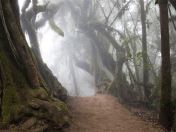
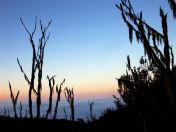
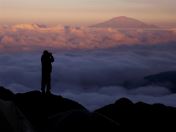
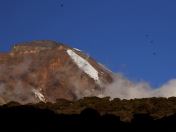
Photo Opportunities
During the Kilimanjaro trekking;
- During the first part you will go through a misty forest, very scenic
- Early morning (before breakfast) gives the best light, walk around and see some beautiful panoramas
- Mt. Meru is visible form many place
- The summit of Kili is visible from many places
Near the summit:
- To catch the first sunlight on the glaciers is a must!
- Sunrise is a magical moment
- Make your summit photos (you need a flah when you are very early)
- After reaching the summit it is possible to go into the crater or to walk towards the glaciers
- Don’t forget to make photos of yourself as well!
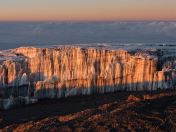

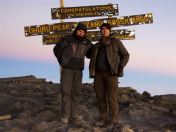
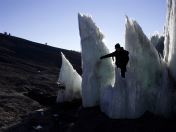
Enjoy your hike, it is a photographer’s delight!
On arrival on the airport our guide will be there waiting for you. During safari we use custom made safari vehicles, custom made for an optimal view of the wildlife. Safari vehicles (and small aircrafts) provide limited space for luggage. It is therefore recommended to travel with light bags since bulky suitcases will overload and might be difficult to be taken on board.
Visa - for those who require one - can be purchased in advance through the Tanzanian embassy or consulate in your home country. Visa can also be obtained upon arrival at Kilimanjaro / Dar es Salaam International Airport or at any overland border. The price for a single entry visa is USD 50 per person.
It is your own responsibility to arrange your visa(s) correctly and in time, but if anything is unclear of course we will be glad to assist you.
Note: This information is subject to change! Always consult the Tanzanian embassy in your country if you are not sure.
In most of the cities it is possible to withdraw money from an ATM. Travelers Cheques are not widely accepted and it is very difficult or impossible to pay by credit card outside the cities. The US dollar is traditionally the hard currency of preference. We advise to bring some Dollars for daily expenses and tips.
Dollar bills should not be older than 10 years.
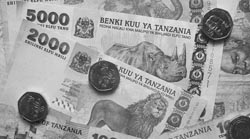
The unit of currency is the Tanzanian Shilling. Please check the latest exchange rates before you go to your destination. This will be a guideline. Please note you will get a better exchange rate in the bigger cities.
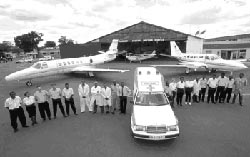
We advise you to apply for a Flying Doctors membership. The membership provides a quick and reliable air evacuation and medical care if needed.
AMREF Flying Doctors offers 2 covers (Annual and Short Term). You can choose between the Maisha Silver (Kenya, Tanzania and Zanzibar), Maisha Gold (Kenya, Tanzania, Zanzibar, Uganda, Rwanda and Burundi) or Maisha Platinum (Kenya, Tanzania, Zanzibar, Uganda, Rwanda, Burundi, South Sudan and Ethiopia).
Please check out the AMREF Flying Doctors website for more information and to become a member.
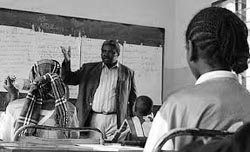 The national language of Tanzania is Kiswahili but English is widely spoken and is the main language in the tourist areas.
The national language of Tanzania is Kiswahili but English is widely spoken and is the main language in the tourist areas.
Tanzania is a tropical country, with high temperatures along the coast and at lower altitudes (especially in the Southern Part). The Northern part is at higher altitudes (except for Lake Natron and Tarangire).
Areas around the Ngorongoro Crater, Mt. Kilimanjaro, Mt. Meru and Arusha are generally cooler.
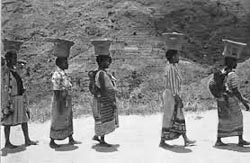
Daytime temperatures are generally warm to hot, so bring lots of light clothing. Evenings are cooler, especially at higher altitudes, so carry a couple of light sweaters too.
Those who intend to do mountain hiking will be exposed to alpine temperatures and should pack accordingly.
Don’t forget to bring a hat, sunglasses and a waterproof jacket. During safaris we advise to avoid black and dark blue clothes (because they can attract tsetse flies). For hiking and walking safaris Solid walking shoes and sturdy clothing are ideal for forest walks.
If you are planning on doing a community walk or visit the local people, we advise you to wear appropriate clothing. For example women putting on long skirts and a top that covers the shoulders.
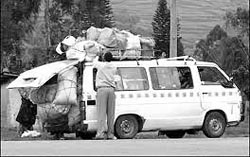 A valid passport is mandatory (passport must be valid for at least 3 months after re-entry) and visa requirements for all countries you are planning to visit should be checked before you travel.
A valid passport is mandatory (passport must be valid for at least 3 months after re-entry) and visa requirements for all countries you are planning to visit should be checked before you travel.
To make the most of your visit to the game reserves and national parks, we advise you to carry binoculars and field guides.
Photographers will need a zoom lens for wildlife (70-300 or more). Please make sure to carry enough memory cards with you. Toiletries and other essentials can be bought in the cities.
A torch (flashlight) can proof to be very useful
We advise you to take an international adapter with you for your electric equipment. The system used in Tanzania is the British system. In most lodges it is possible to charge your batteries.
Please mind that washrooms along the road are sometimes not to European standards, for example squatting toilets, no flushing toilets or no toilet paper available. Like the locals say: T.I.A. This Is Africa.
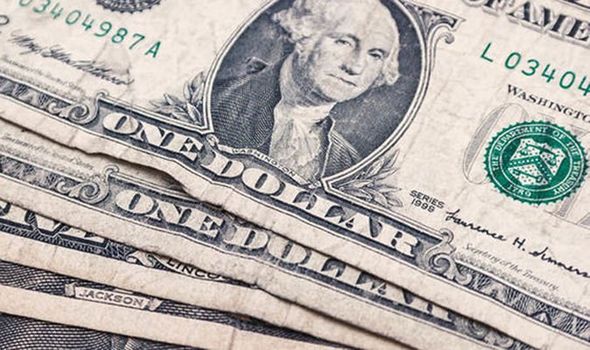 Tipping will always be appreciated. It is normal to tip 5-10% in hotels and restaurants. Guides, drivers and carriers should always be tipped. Indication: for carriers USD 1-3 and for your driver/guide USD 5-15 per day, depending on the group size, number of days and your satisfaction.
Tipping will always be appreciated. It is normal to tip 5-10% in hotels and restaurants. Guides, drivers and carriers should always be tipped. Indication: for carriers USD 1-3 and for your driver/guide USD 5-15 per day, depending on the group size, number of days and your satisfaction.

